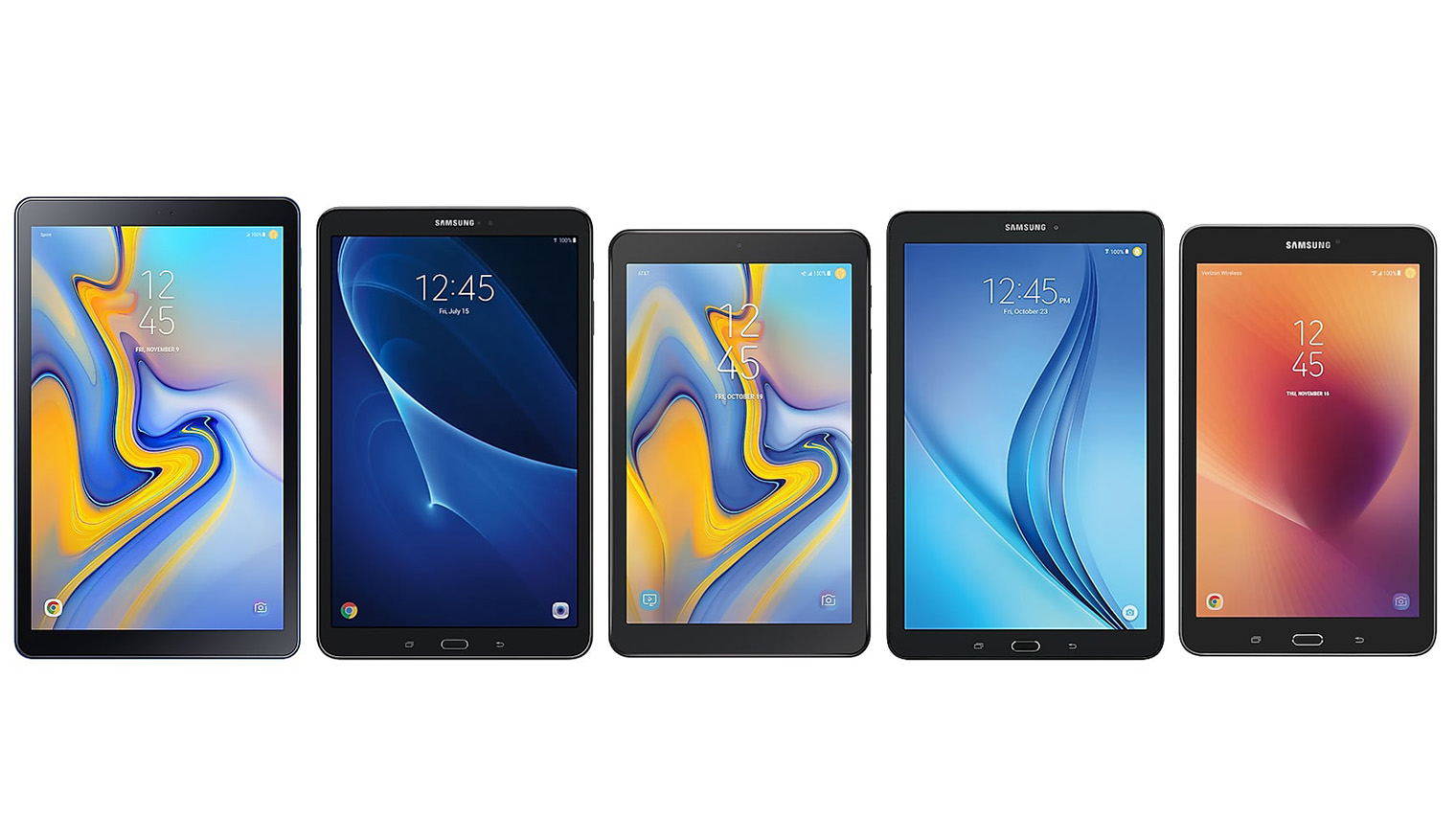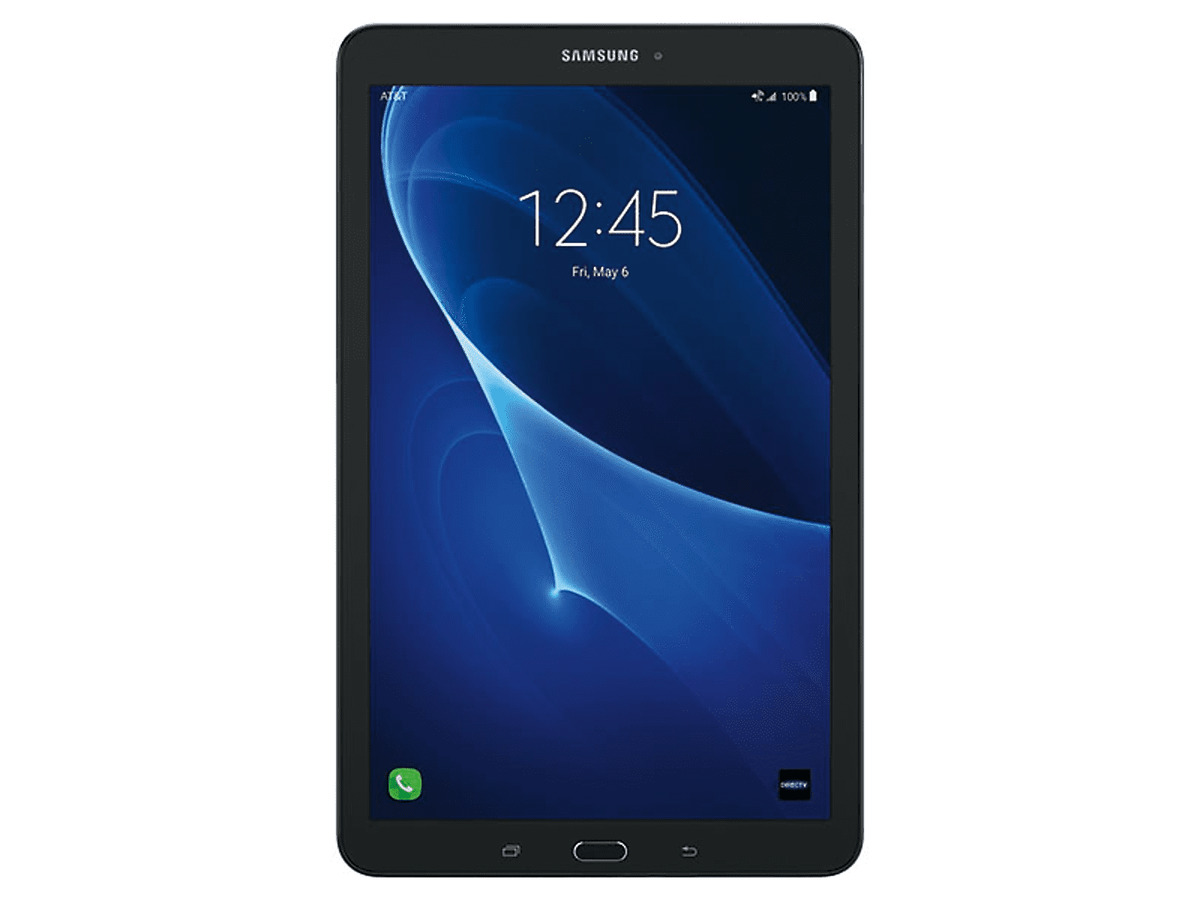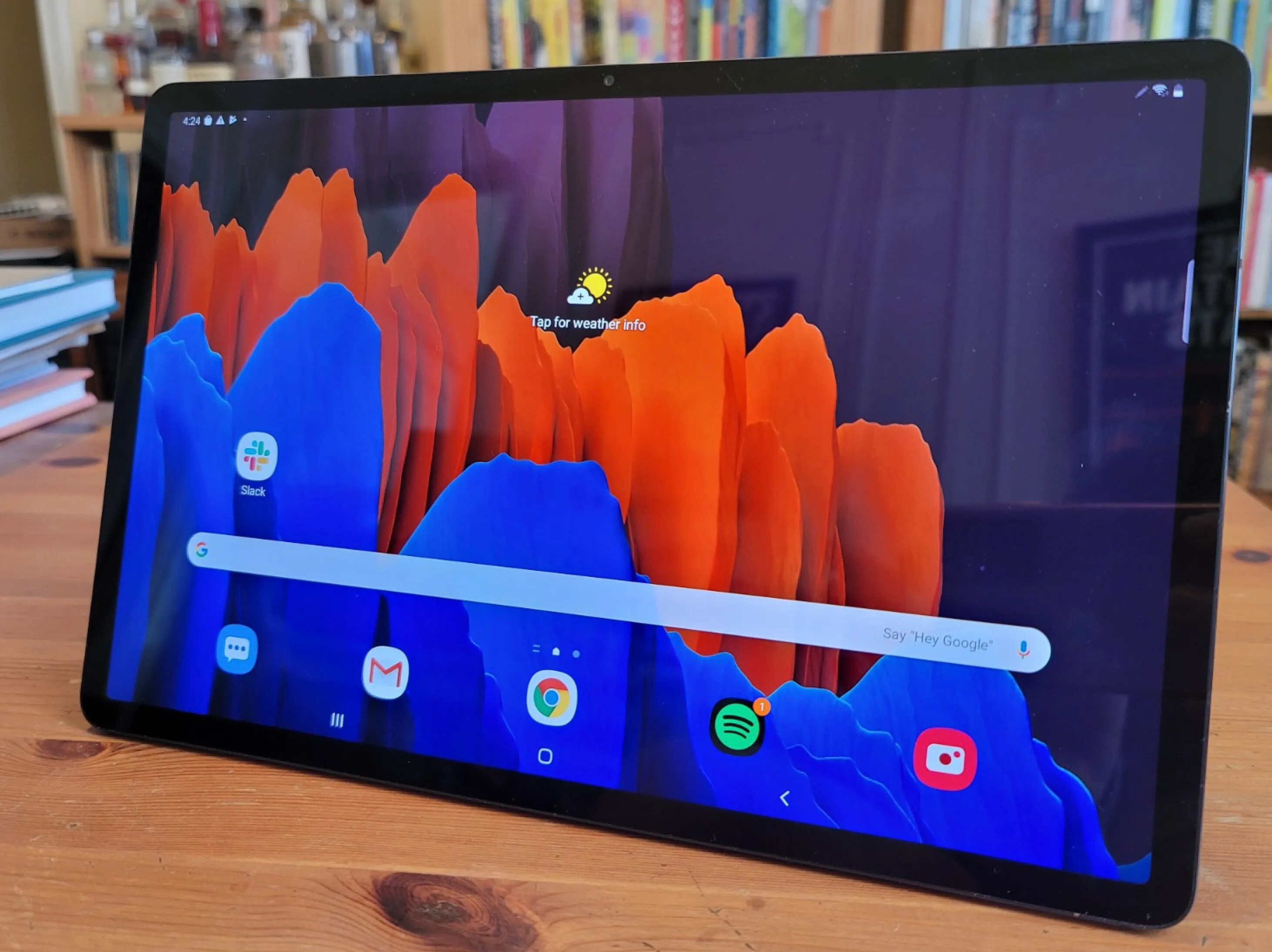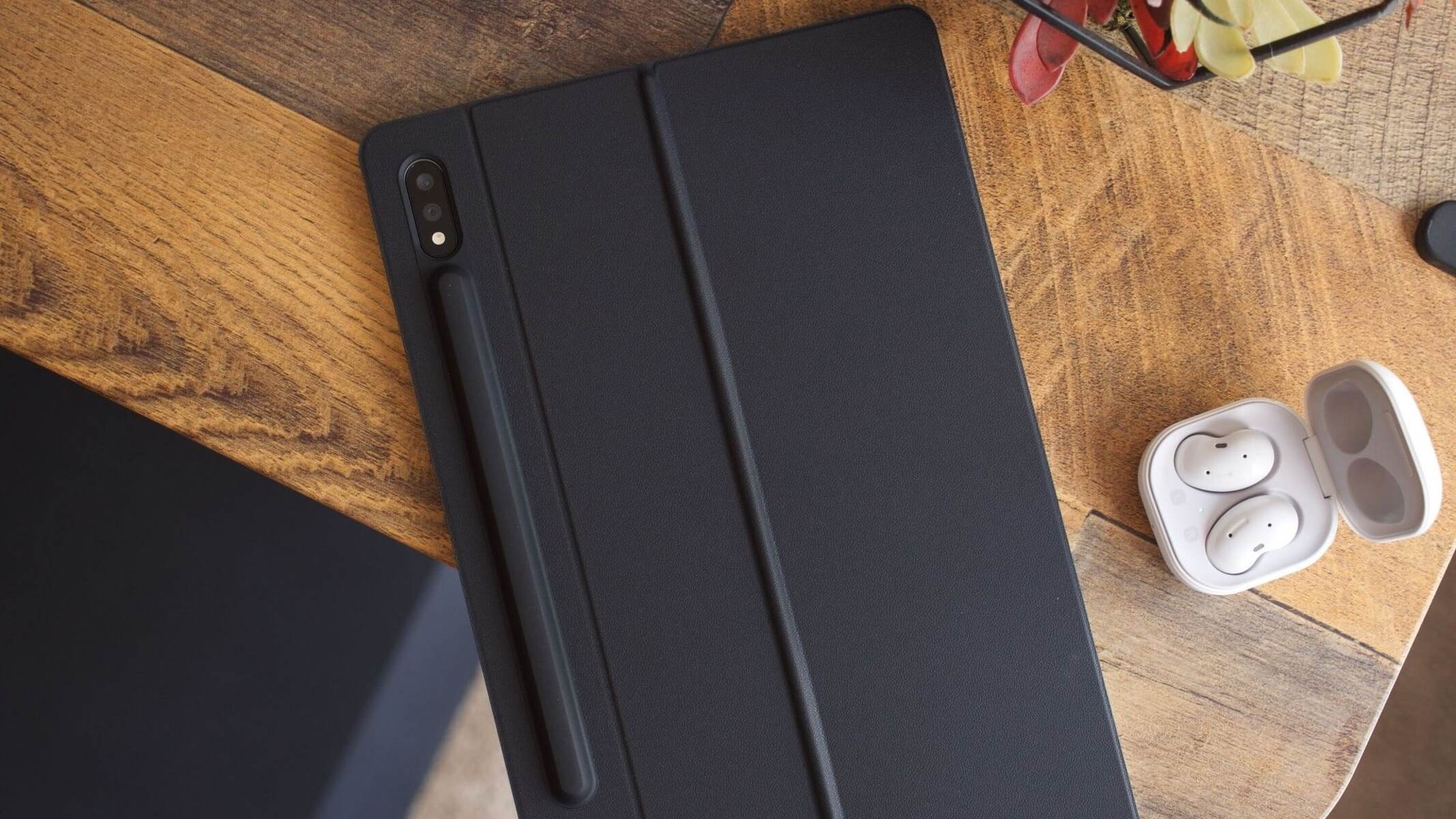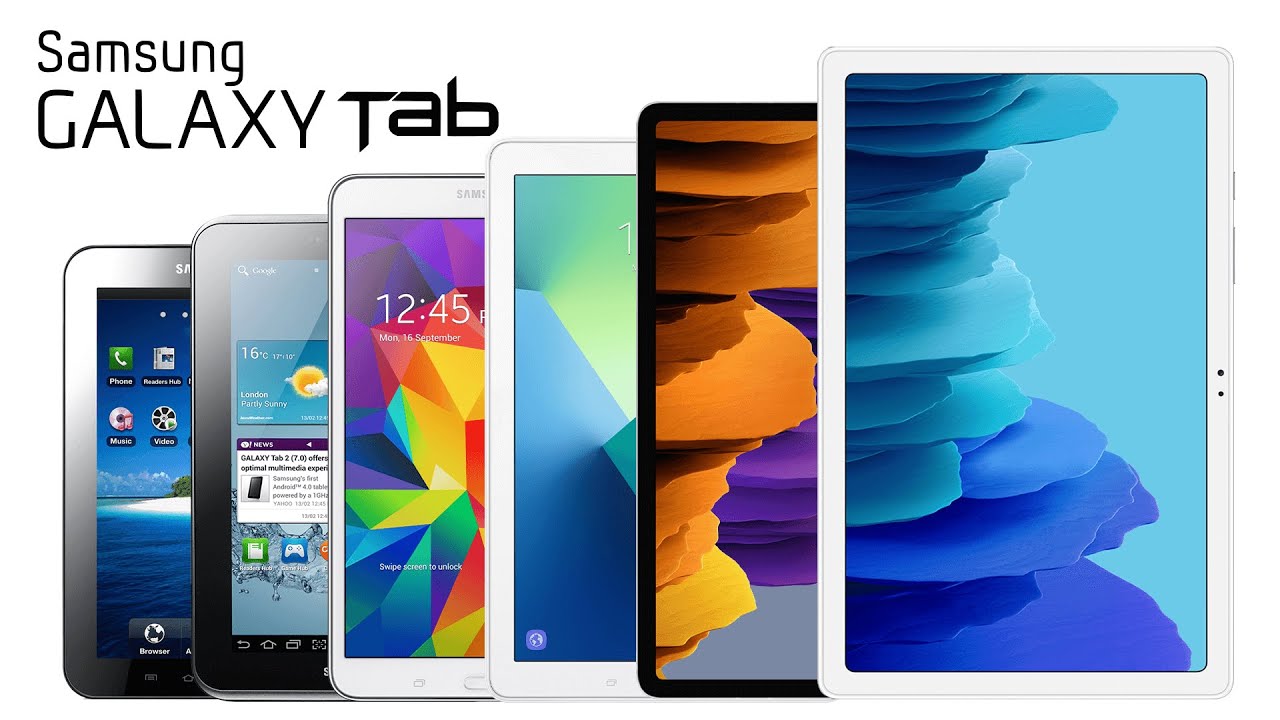Introduction
The Samsung Galaxy Tab A and Tab E are two popular tablet models from the renowned tech giant, Samsung. Both devices offer an array of features and functionalities, but they do have their differences. Understanding these differences can help you make an informed decision when choosing between the two models.
The Samsung Galaxy Tab A is designed to cater to the needs of casual users who require a reliable and versatile tablet for everyday tasks. On the other hand, the Samsung Galaxy Tab E is aimed towards budget-conscious consumers who seek a more affordable tablet with decent performance.
While both tablets come from the same brand, they differ in various aspects, including design, display, performance, camera, storage and connectivity options, operating system and software, battery life, price, and availability. In this article, we will delve into the nuances of each model to help you decide which one is the right fit for your needs.
So, whether you’re looking for a tablet for entertainment, productivity, or both, read on to learn about the differences between the Samsung Galaxy Tab A and Tab E and choose the one that ticks all the boxes for you.
Design
When it comes to design, both the Samsung Galaxy Tab A and Tab E showcase unique aesthetics that appeal to different preferences.
The Samsung Galaxy Tab A boasts a sleek and modern design. It features a slim profile with a metallic finish, giving it a premium look and feel. The tablet also sports rounded edges, providing a comfortable grip during extended use. Additionally, the Galaxy Tab A is lightweight, making it easy to carry around and use on the go.
On the other hand, the Samsung Galaxy Tab E has a more traditional design. It features a plastic back panel with a textured finish, offering a secure grip. While it may not have the same premium look as the Tab A, the Tab E’s design is practical and durable, making it a suitable choice for those who prioritize functionality.
Another notable difference in design between the two tablets is the placement of the physical buttons. The Tab A features buttons located on the sides of the device, making them easily accessible. In contrast, the Tab E has its buttons positioned at the bottom, which may take some getting used to for users accustomed to side-mounted buttons.
Overall, the Samsung Galaxy Tab A and Tab E offer distinct design elements. The Tab A’s sleek and modern design appeals to those who prioritize aesthetics, while the Tab E’s practical and durable design is a hit with users seeking a reliable budget-friendly tablet.
Display
The display is a critical aspect of any tablet, as it determines the quality of visual content and the overall user experience. Let’s compare the display features of the Samsung Galaxy Tab A and Tab E.
The Samsung Galaxy Tab A boasts a vibrant and immersive display. It features a 10.1-inch LCD screen with a resolution of 1920 x 1200 pixels. This Full HD display delivers crisp and clear visuals, making it ideal for watching movies, browsing the web, or playing games. The Tab A also supports Samsung’s Adaptive Display technology, which automatically adjusts the screen brightness and color saturation based on the surrounding lighting conditions for optimal viewing experience.
On the other hand, the Samsung Galaxy Tab E comes with a 9.6-inch LCD screen and a resolution of 1280 x 800 pixels. While it may have a slightly lower resolution compared to the Tab A, it still provides decent picture quality and sharpness. The Tab E’s display is well-suited for casual media consumption and day-to-day tasks, but it may not offer the same level of visual immersion as the Tab A.
Both tablets feature a 16:10 aspect ratio, which is ideal for widescreen content such as movies and games. Additionally, they utilize Multi-Touch technology, allowing users to interact with the screen using gestures like pinch-to-zoom and swiping.
In terms of display quality, the Samsung Galaxy Tab A takes the lead with its higher resolution and enhanced visual features. However, for users who prioritize a more budget-friendly option and don’t require a top-of-the-line display, the Tab E’s screen is still quite impressive and sufficient for everyday usage.
Overall, the Samsung Galaxy Tab A offers a superior display experience with its higher resolution and Adaptive Display technology, making it the preferred choice for users who demand a visually stunning tablet. However, if display quality is not a top priority and budget is a concern, the Tab E still delivers satisfactory performance.
Performance
When it comes to performance, the Samsung Galaxy Tab A and Tab E offer different capabilities to cater to varying user needs.
The Samsung Galaxy Tab A is equipped with a more powerful processor and RAM, offering smoother multitasking and faster overall performance. It features an Exynos 7904 octa-core processor, which provides ample processing power for running demanding applications and graphics-intensive games. Additionally, it comes with 2 or 3GB of RAM, depending on the specific model, ensuring efficient multitasking and seamless app switching.
On the other hand, the Samsung Galaxy Tab E is powered by a lower-tier processor and has less RAM compared to the Tab A. It typically comes with a quad-core processor and 1.5GB of RAM, which may result in slower app loading times and less efficient multitasking. While the Tab E can handle basic tasks such as web browsing, social media, and lightweight applications, it may struggle with resource-intensive tasks and heavy multitasking.
Both tablets run on Android operating systems, with the Galaxy Tab A generally running on a newer version. This can translate into better performance and compatibility with the latest applications and software updates.
Another aspect to consider is storage capacity. The Samsung Galaxy Tab A typically offers more storage options, with models available in 32GB and 64GB configurations. It also supports expandable storage via microSD card, allowing users to add more storage space as needed. On the other hand, the Tab E usually offers limited internal storage, often starting at 16GB, but also supports expandable storage through a microSD card slot.
Overall, the Samsung Galaxy Tab A delivers superior performance compared to the Tab E, thanks to its more powerful processor, higher RAM capacity, and better storage options. It is better suited for users who demand seamless multitasking and better performance for resource-intensive applications or games. However, if your usage primarily involves basic tasks and you require an affordable option, the Tab E can still provide satisfactory performance.
Camera
The camera capabilities of a tablet can play a significant role, especially for users who enjoy capturing photos and videos on the go. Let’s compare the camera features of the Samsung Galaxy Tab A and Tab E.
The Samsung Galaxy Tab A excels in the camera department, offering a more advanced camera setup compared to the Tab E. It typically features an 8MP rear camera and a 5MP front camera, enabling users to capture high-quality photos and videos. The rear camera is equipped with autofocus and supports features like HDR (High Dynamic Range) for better exposure in challenging lighting conditions. The front camera is perfect for video calls and selfie enthusiasts, delivering satisfactory image quality for social media sharing and online communication.
In contrast, the Samsung Galaxy Tab E usually comes with a more modest camera setup. It typically features a 5MP rear camera and a 2MP front camera. While these cameras may not offer the same level of image quality as the Tab A, they are still capable of capturing decent photos and videos. The rear camera of the Tab E also supports autofocus, allowing users to achieve sharp and focused shots.
Both tablets offer various camera modes and settings, such as panorama, beauty mode, and continuous shot, to enhance the photography experience. Additionally, they come with basic editing tools, enabling users to crop, rotate, and apply filters to their photos directly on the tablet.
It is worth noting that tablets, in general, are not designed to replace dedicated cameras or smartphones when it comes to photography. However, the camera capabilities of the Samsung Galaxy Tab A and Tab E are more than sufficient for casual photography needs, such as capturing moments, video calls, and sharing photos on social media platforms.
In summary, the Samsung Galaxy Tab A has a more advanced camera setup, offering higher resolution and more features compared to the Tab E. If photography is a priority for you, the Tab A should be your preferred choice. However, if camera capabilities are not your main concern, and you are content with basic photography functions, the Tab E can still meet your needs.
Storage and Connectivity
The storage capacity and connectivity options of a tablet play a crucial role in determining its usability and versatility. Let’s compare the storage and connectivity features of the Samsung Galaxy Tab A and Tab E.
The Samsung Galaxy Tab A typically offers more storage options, making it suitable for users who require ample space for their apps, media files, and documents. It is available in 32GB and 64GB storage configurations, providing users with the flexibility to choose a model that suits their needs. Additionally, the Tab A supports expandable storage via a microSD card slot, allowing users to add even more storage space as required.
On the other hand, the Samsung Galaxy Tab E usually comes with limited internal storage, often starting at 16GB. However, like the Tab A, it also supports expandable storage through a microSD card slot, enabling users to increase the available storage capacity. This is particularly useful for users who need additional space for their music, videos, photos, and other files.
As for connectivity, both tablets offer Wi-Fi connectivity, allowing users to access the internet wherever there is a Wi-Fi network available. However, some models of the Samsung Galaxy Tab A also include cellular connectivity options, enabling users to access the internet on the go through a mobile data plan. This can be beneficial for users who require constant internet connectivity, even when they are outside the range of Wi-Fi networks.
In terms of other connectivity options, both the Tab A and Tab E come with Bluetooth capabilities, allowing users to connect wireless peripherals like headphones, speakers, or keyboards. They also feature a USB port, which can be used for charging the device or for connecting it to a computer for data transfer.
Ultimately, the Samsung Galaxy Tab A offers more storage options and the possibility for greater expansion, making it more suitable for users who need ample space for their files and media. Additionally, the optional cellular connectivity provides added convenience for users who require constant internet access on the go. Meanwhile, the Tab E provides sufficient storage for basic needs and also comes with expandable storage, ensuring users have the flexibility to increase their device’s storage as needed.
Operating System and Software
The operating system and software of a tablet greatly impact its functionality and user experience. Let’s compare the operating system and software features of the Samsung Galaxy Tab A and Tab E.
The Samsung Galaxy Tab A usually runs on a more recent version of the Android operating system compared to the Tab E. This is advantageous in terms of performance, security, and access to the latest features and updates. The Tab A allows users to enjoy the benefits of an up-to-date operating system, including improved stability, enhanced user interface, and increased compatibility with the latest applications.
Both tablets come pre-loaded with a variety of software applications and features. Manufacturers often include their own proprietary software, such as Samsung’s custom UI (User Interface) and apps, to enhance the user experience. In addition, both the Tab A and Tab E provide access to the Google Play Store, enabling users to download and install a wide range of apps, games, and productivity tools.
It’s important to note that the availability of certain software features and apps may vary depending on the specific model and region. Higher-end models of the Tab A may come with additional software features such as Samsung DeX, which allows users to use the tablet as a desktop-like interface when connected to an external display.
Furthermore, Samsung often provides regular software updates for its devices, including security patches and performance improvements. These updates help to ensure a smooth and secure user experience by addressing any potential vulnerabilities or software bugs.
In summary, the Samsung Galaxy Tab A benefits from running on a more recent version of the Android operating system, providing users with improved performance and access to the latest features. The Tab A also offers a wide range of software applications and features, including Samsung’s proprietary software, enhancing the user experience. The Tab E, while running on an older version of the operating system, still provides access to essential software features and the Google Play Store.
Battery Life
Battery life is a crucial factor to consider when choosing a tablet, especially for users who are constantly on the move or frequently use their devices for extended periods. Let’s compare the battery life of the Samsung Galaxy Tab A and Tab E.
The Samsung Galaxy Tab A is known for its impressive battery life, allowing users to enjoy extended usage without worrying about frequent recharging. With its large battery capacity, the Tab A can deliver several hours of screen-on time, making it ideal for tasks such as web browsing, watching videos, and playing games. The exact battery life may vary depending on usage patterns and settings, but overall, the Tab A’s battery performance is considered to be above average.
On the other hand, the Samsung Galaxy Tab E comes with a slightly smaller battery capacity compared to the Tab A. This means that the Tab E may offer a slightly shorter battery life, requiring more frequent charging compared to the Tab A. However, with optimized battery usage and efficient power management, the Tab E is still capable of providing a decent battery performance for day-to-day tasks and casual usage.
The battery life of both tablets can be influenced by various factors, including screen brightness, app usage, and connectivity options. Adjusting these settings, such as reducing screen brightness or disabling unnecessary background services, can help extend the battery life of both devices.
It’s worth noting that the battery life can also vary depending on the specific model and configuration of the tablets. Higher-end models with more storage, cellular connectivity, and larger screens may consume slightly more power compared to their lower-end counterparts.
Additionally, it’s important to consider that battery performance may degrade over time due to regular usage and charging cycles. This is normal for any device and can result in a reduction in battery life over the course of its lifespan.
In summary, the Samsung Galaxy Tab A generally offers a longer battery life compared to the Tab E, thanks to its larger battery capacity. However, both tablets are capable of providing satisfactory battery performance for everyday tasks and casual usage. It’s recommended to adjust settings and usage patterns to optimize battery life and ensure a longer-lasting tablet experience.
Price and Availability
Price and availability are important considerations when choosing between the Samsung Galaxy Tab A and Tab E, as they can greatly impact your purchasing decision.
The Samsung Galaxy Tab A is typically positioned as a mid-range tablet, offering a balance between performance and affordability. While prices may vary depending on the specific model, storage configuration, and regional factors, the Tab A is generally priced higher than the Tab E. However, considering its superior features and capabilities, the higher price of the Tab A can be justified for users in need of enhanced performance, display quality, and overall user experience.
On the other hand, the Samsung Galaxy Tab E is positioned as a budget-friendly option, making it more accessible to a wider range of users. The Tab E typically offers lower price points compared to the Tab A, making it an attractive choice for users on a tighter budget or those who prioritize cost savings over advanced features.
Furthermore, availability may vary depending on your location and the specific models you are interested in. The Samsung Galaxy Tab A is often widely available through various retail channels, including online stores and physical stores. It is typically offered by major retailers and carriers, contributing to its widespread availability. The Tab E, on the other hand, may have limited availability or may be phased out in some regions, as it is an older tablet model.
It’s worth mentioning that prices and availability can change over time due to market dynamics, promotions, and the release of new tablet models. Therefore, it is advisable to research current prices and check reputable retailers for the most up-to-date information on pricing and availability.
In summary, the Samsung Galaxy Tab A is generally priced higher than the Tab E, given its advanced features and capabilities. The Tab E, on the other hand, offers a more budget-friendly option for users who prioritize affordability. Availability may vary depending on your location and the specific models you are interested in, so it’s recommended to check with retailers for the most accurate information.
Conclusion
After comparing the Samsung Galaxy Tab A and Tab E across various important aspects, it’s evident that both tablets have their own strengths and cater to different user needs.
The Samsung Galaxy Tab A stands out with its sleek design, vibrant display, powerful performance, advanced camera capabilities, ample storage options, and longer battery life. It offers a more premium and versatile tablet experience, making it suitable for users who require a more robust device for multitasking, multimedia consumption, and productivity tasks.
On the other hand, the Samsung Galaxy Tab E offers a more budget-friendly option. It features a practical and durable design, satisfactory display quality, decent performance for everyday tasks, and expandable storage options. The Tab E is ideal for users who prioritize affordability and basic tablet functionalities.
When making a decision between the Tab A and Tab E, consider your specific requirements, budget, and intended usage. If you demand high performance, superior display quality, and advanced features, the Tab A is the recommended option. However, if you are on a budget and primarily need a tablet for basic tasks such as web browsing, email, and light entertainment, the Tab E provides a more accessible and affordable choice.
Regardless of your choice, both tablets offer the reliability and quality associated with the Samsung brand. Both are backed by a reputable manufacturer and provide access to an extensive app ecosystem through the Google Play Store.
In conclusion, by considering factors such as design, display, performance, camera, storage and connectivity, operating system and software, battery life, price, and availability, you can make an informed decision and select the tablet that best suits your personal preferences and requirements.







